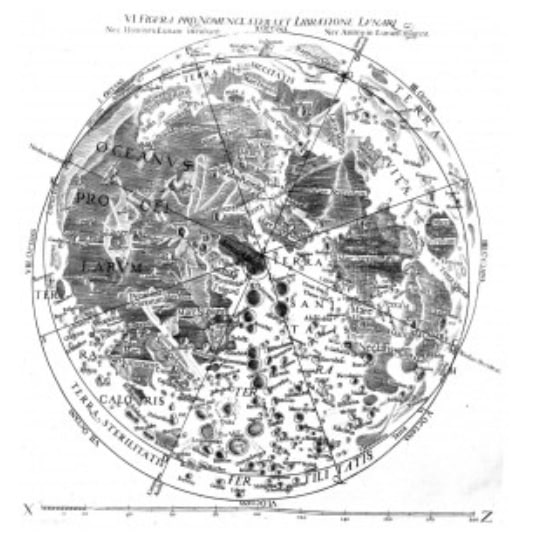What’s in today’s article?
- Why in news?
- Existing Indian Names on the Moon
- Who names landing sites on the Moon?
- How does IAU consider names for planetary objects?
- Are there any norms for naming Space objects?
Why in news?
- While speaking at the ISRO headquarters in Bengaluru, PM Modi announced that the point where the Chandrayaan-3 lander touched down on the lunar surface would be named Shiv Shakti.
- Later, ISRO chief K Somnath said that the country has every right to name the landing site.
- The Moon does not come under the jurisdiction of any one country. This raises the question about naming of points on moon’s surface.
- In 1966, the United Nations Office for Outer Space Affairs came out with the Outer Space Treaty.
- Setting some common principles for space exploration, the Treaty said in its Article II:
- Outer space, including the moon and other celestial bodies, is not subject to national appropriation by claim of sovereignty, by means of use or occupation, or by any other means.
Existing Indian Names on the Moon
- The naming of the landing site is not the first incident.
- Several Indian names are already there on the Moon. We have a Sarabhai crater on the Moon.
- Following the 2008 mission Chandrayaan-1, a spot where the probe crashed (as it was meant to for the purposes of the mission), was named “Jawahar Sthal” after the first Prime Minister, Jawaharlal Nehru.
- ISRO had suggested to name the impact site after Nehru. It was on his birthday the landing was made, and he had long championed undertaking scientific developments and research in India.
- International Astronomical Union (IAU) later accepted it, making it official.
Who names landing sites on the Moon?
- International Astronomical Union (IAU)
- The IAU is the primary organization responsible for the official naming of celestial bodies and their surface features, including those on the Moon.
- IAU was founded in 1919. It determines some other rules for Space activities. India is among its 92 members countries.
- Its mission is to promote and safeguard the science of astronomy in all its aspects, including research, communication, education and development, through international cooperation.
- They have established guidelines and procedures for naming lunar craters, mountains, valleys, and other features.
- The IAU is the primary organization responsible for the official naming of celestial bodies and their surface features, including those on the Moon.
- An informal practice of naming
- Many mission sites first see names being given to them informally.
- An informal practice of naming landmarks was common during the Apollo missions.
- Names were given to the small craters and mountains near each landing site (e.g., Shorty, St. George, Stone Mountain) but official names were used as well (e.g., Hadley Rille).
- Most of the informal names assigned during Apollo were later given “official” status by the IAU.
- Historical and Cultural References
- Lunar features are sometimes named after historical figures, scientists, astronauts, or cultural references.
- For example, many lunar craters are named after famous scientists and explorers.
- Space Agencies
- National and international space agencies, such as NASA and ESA (European Space Agency), may play a role in suggesting names for lunar sites, especially those of significant scientific or historical importance.
How does IAU consider names for planetary objects?
- IAU’s Working Groups normally handle this process.
- These groups are made up of experts in planetary science, lunar geology, and related fields. They propose and review names for lunar features.
- Upon successful review by vote of the members of the Working Group, names are considered approved as official IAU nomenclature, and can be used on maps and in publications.
- Any objections to them can be raised by mailing the IAU General-Secretary within three months from the time the name was placed on the website.
Are there any norms for naming Space objects?
- Yes, the IAU gives several suggestions.
- For planetary objects, it states the name should be simple, clear, and unambiguous and should not duplicate existing names.
- It has a host of other rules, such as:
- No names having political, military or religious significance may be used, except for names of political figures prior to the 19th century.
- Commemoration of persons on planetary bodies should not normally be a goal in itself, but may be employed in special circumstances.
- Persons being so honored must have been deceased for at least three years, before a proposal may be submitted.
Q1) What is International Astronomical Union (IAU)?
The International Astronomical Union (IAU) is an international organization that brings together astronomers and astrophysicists from around the world. It was founded in 1919 and is headquartered in Paris, France. The primary mission of the IAU is to promote and safeguard the science of astronomy in all its aspects through international cooperation.
Q2) What is ESA (European Space Agency)?
The European Space Agency (ESA) is an intergovernmental organization dedicated to the exploration of space. Established in 1975, ESA is a collaboration among 22 European member states that work together to conduct space research, develop space technologies, and undertake space missions. ESA’s headquarters is located in Paris, France, and it has several establishments, research centers, and offices throughout Europe.
Source: ‘Shiv Shakti’, ‘Tiranga’, ‘Jawahar Sthal’ after Chandrayaan missions: Who names sites on the Moon? | IAU
Last updated on November, 2025
→ Check out the latest UPSC Syllabus 2026 here.
→ Join Vajiram & Ravi’s Interview Guidance Programme for expert help to crack your final UPSC stage.
→ UPSC Mains Result 2025 is now out.
→ UPSC Notification 2026 is scheduled to be released on January 14, 2026.
→ UPSC Calendar 2026 is released on 15th May, 2025.
→ The UPSC Vacancy 2025 were released 1129, out of which 979 were for UPSC CSE and remaining 150 are for UPSC IFoS.
→ UPSC Prelims 2026 will be conducted on 24th May, 2026 & UPSC Mains 2026 will be conducted on 21st August 2026.
→ The UPSC Selection Process is of 3 stages-Prelims, Mains and Interview.
→ UPSC Result 2024 is released with latest UPSC Marksheet 2024. Check Now!
→ UPSC Prelims Result 2025 is out now for the CSE held on 25 May 2025.
→ UPSC Toppers List 2024 is released now. Shakti Dubey is UPSC AIR 1 2024 Topper.
→ UPSC Prelims Question Paper 2025 and Unofficial Prelims Answer Key 2025 are available now.
→ UPSC Mains Question Paper 2025 is out for Essay, GS 1, 2, 3 & GS 4.
→ UPSC Mains Indian Language Question Paper 2025 is now out.
→ UPSC Mains Optional Question Paper 2025 is now out.
→ Also check Best IAS Coaching in Delhi

















